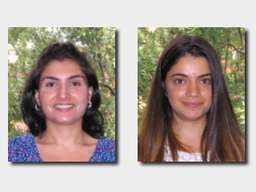Graduate Students Seminar
Location
Lecture Hall 1: Biological Sciences : 101
Date & Time
February 27, 2019, 11:00 am – 12:00 pm
Description
| Session Chair: | Nadeesri Wijekoon |
| Discussant: | Dr. J. Park |
Speaker 1: Aryana Arsham
- Title
- Individualized cost-effectiveness analysis
- Abstract
-
Increasing health care costs make the economic evaluation of competing treatments necessary for resource allocation. The aim is to prioritize a treatment intervention that is clinically effective and offers good value for the money for a specific patient. Cost-effectiveness analysis (CEA) deals with statistical methodologies that are used to evaluate relative costs and outcomes of competing treatments. The average incremental net benefit (INB) is a criterion used for CEA, and it is based on incremental average costs and average effectiveness measures, along with a willingness to pay parameter, which is the maximum monetary amount one is willing to pay for a unit increase in effectiveness.
The INB measures cost-effectiveness of a new treatment at the population level. This metric does not account for relevant patient level characteristics that can affect cost-effectiveness. We propose a regression model that can account for patient level covariates, and develop accurate methodologies for assessing cost-effectiveness based on the INB. The results will be illustrated with an example.
Speaker 2: Maria Deliyianni
- Title
- Inextensible Cantilever undergoing large deflections
- Abstract
- In this talk we will review the equations of motion that describe a recent model for a cantilever undergoing large deflections. Although the model is a 1-D beam, the inextensibile nature of cantilevers produces quasilinear stiffness terms as well as a nonlocal inertia term, making analysis highly nontrivial. We produce the weak formulation of the problem, and ask the natural question about the existence and uniqueness of weak solutions. Galerkin's method will be employed, utilizing the Euler-Bernoulli cantilever modes. While the method provides weak limit points for the sequence of approximate solutions, identifying weak limits as solutions to this quasilinear problem is quite challenging. Indeed, additional compactness (in the sense of Sobolev embeddings) is required, and this necessitates obtaining energy estimates in higher norms through differentiation of the equations of motion.
Tags:
